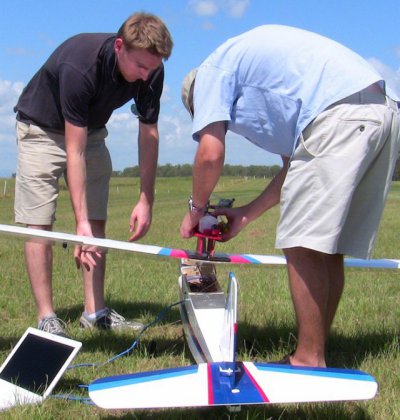Research presented to this month’s Australasian Conference on Robotics and Automation in Melbourne by Richard Moore of The Vision Centre and the University of Queensland shows that small UAS can use insect-like visual navigation for navigation.
Navigation using a compass to tell direction is not precise enough, says Moore, and gyroscopes and accelerometers which can determine the aircraft’s pitch and roll are affected by the vehicle’s acceleration. “This means that UAS can’t perform significant manoeuvres without losing their sense of direction for a while,” says Moore.
To develop more effective and safe navigation Moore and colleagues have developed a system that imitates the visual navigation of insects. Moore says slow motion films show that when insects fly, they try as much as possible to keep their heads locked in the upright position to get a stabilised image of the horizon.
They are then able to navigate by paying attention to distant things such as the horizon, the Sun, clouds and different brightnesses in the sky, which are pretty static compared to their local environment.
The new UAS navigation system relies on panoramic signals captured by fisheye-lensed cameras, which are then processed using special software. The system constantly compares and matches the panorama it sees to keep track of where the aircraft is going. Moore says the navigation system would mainly be for use in rural environments or over the ocean and would be less effective in a built-up environment.
In a trial just south of Brisbane, Moore says the team showed that a small UAS was able to use the system to perform four minutes of complex manoeuvres without losing its sense of direction, and then successfully land on a runway. A laptop was used to communicate with the aircraft while it was on the ground, but once airborne it was able to perform all the required computations on-board and fly completely autonomously.
Unlike other vision-based navigation systems, Moore says his team’s combines both information on the pitch and roll of the aircraft, as well as information on its direction, to get the most complete and accurate picture of the state of the aircraft. “I don’t know of anyone else who has performed these sorts of manoeuvres using vision,” he says. Vision-based navigation systems relying on cameras can be easily miniaturised, setting the scene for smaller and smaller UAS, says Moore. “There are groups around the world that are actually developing these systems to be the size of insects,” he says.
Moore says funding for UAS development has come from NASA, the US Air Force and industry, including Boeing.
Source: ABC Science

